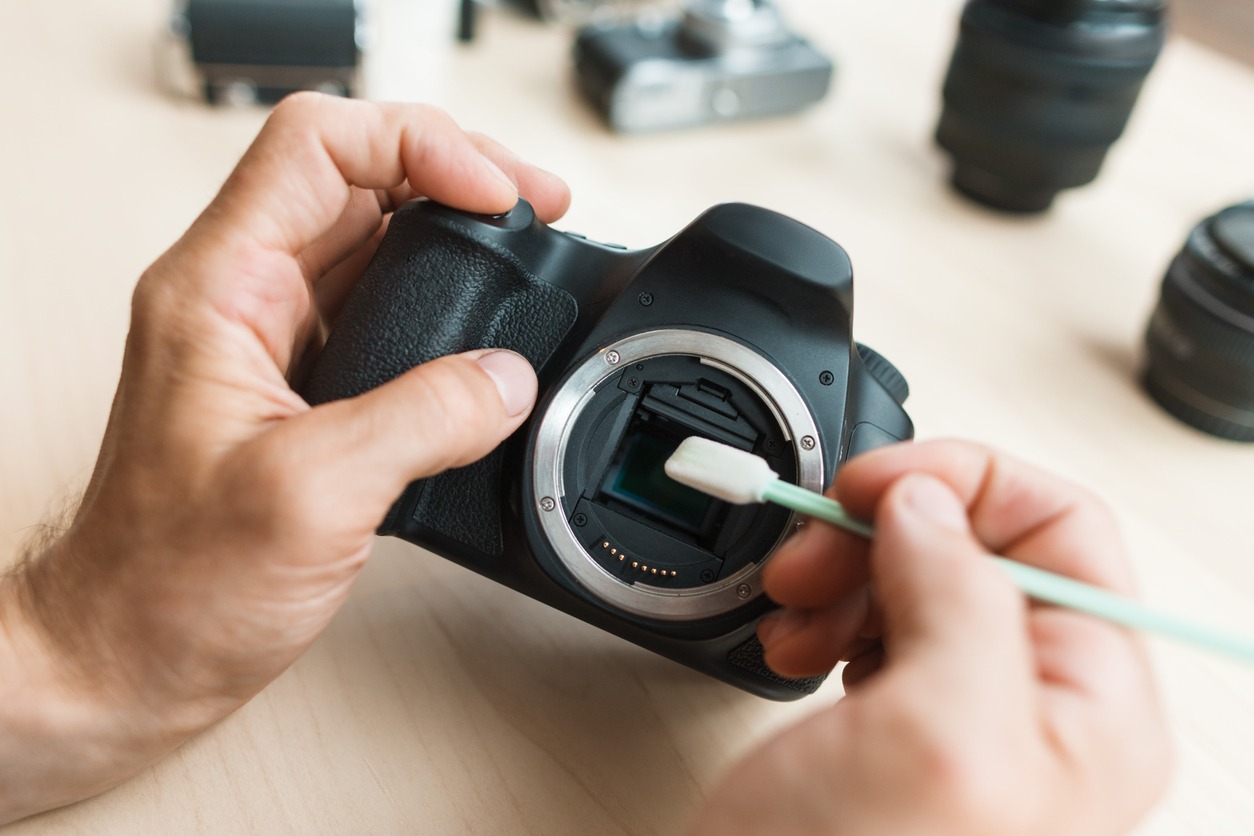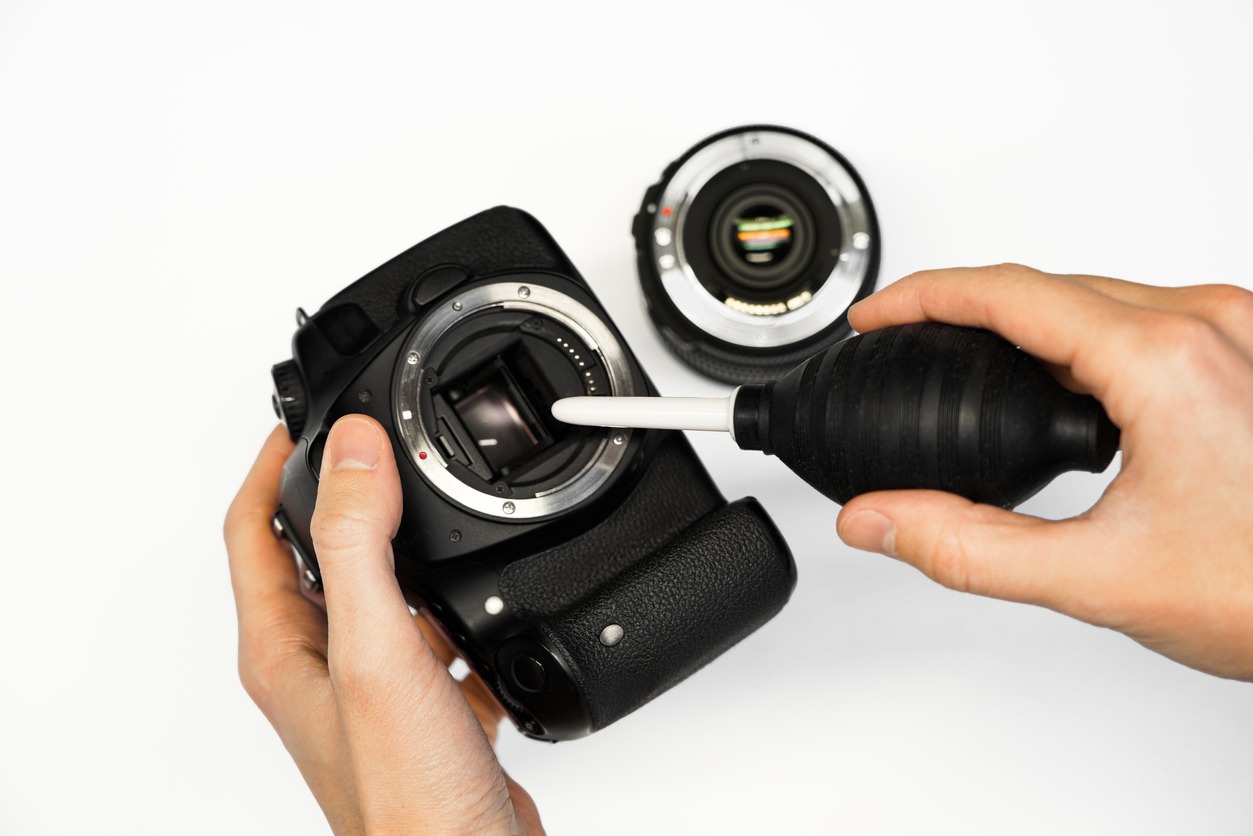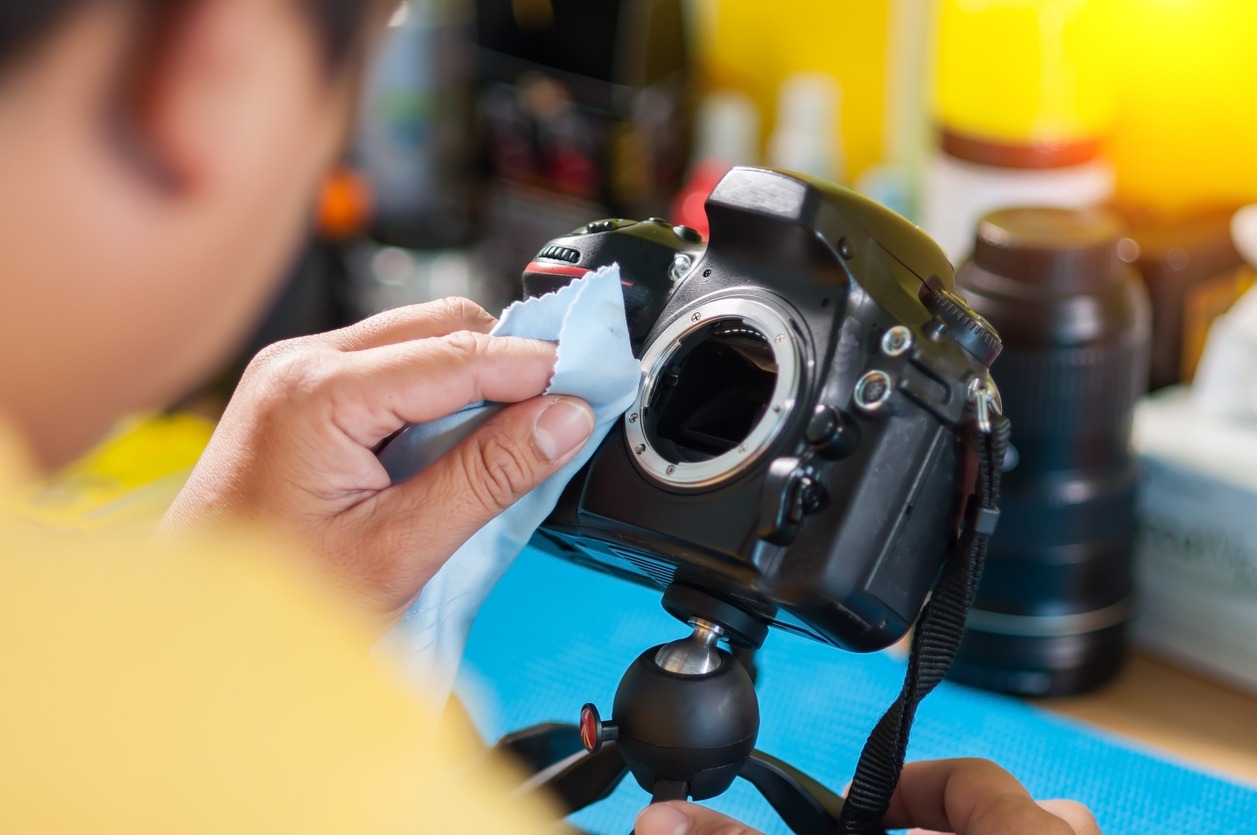DSLR cameras and their accessories are expensive. If you do not take good care of them, they will deteriorate much faster. These cameras are generally reliable but require consistent maintenance to ensure that they work optimally.
It is only natural that as you use your camera, it will be coated in microscopic bits of dust and grime. Still, if you leave it, it can significantly affect your camera’s functionality. Maintaining a camera is quite simple. If done regularly, you can prevent dust particles from getting stuck in the machinery and causing it to malfunction. Additionally, water is also known to cause internal damage and stain your lens.
Steps To Clean Your DSLR Camera
Modern DSLR cameras are reliable pieces of hardware. Still, they need to be regularly cleaned if you want to increase their lifespan. By preventing user error and maintaining the camera well, you can ensure that it works as it should, allowing you to take pictures without malfunctioning.
One of the biggest issues that DSLR camera owners face is that their lenses get stained, and their expensive cameras start to break down. To prevent this, you must clean your camera well. Here are some simple steps to keep your DSLR cameras in tip-top shape.
Additionally, precaution is necessary. You must protect your camera from the elements. When not in use, store your camera in a camera bag or case. If you’re shooting in rainy or humid conditions, use a weather-resistant camera bag or cover to protect your equipment.
The Items You Need
For proper maintenance of your camera, the first thing you need to do is gather all the items you need. Depending on how you like to clean your devices, you can use various items. Here are a few items that are commonly used.
|
Item |
Use |
|
Microfiber Cloth |
A microfiber cloth is a simple cloth that can be used to clean sensitive screens and lenses. Using this, you can reach all the spots on your device and wipe off the dust. One of the major benefits of using it is that it cleans without leaving scratches. |
|
A Lens Cleaning Fluid |
A lens cleaning fluid can be bought or made using various ingredients and chemicals that are safe for sensitive screens and do not leave marks and streaks. They help remove any stains or residue from your camera’s lens and screen. |
|
Lens Puffer |
A lens puffer helps you remove dust off your lens or sensor that can ruin a picture. It emits a powerful jet of air that can help remove dust from small nooks and crannies of the camera. |
Clean Your Gear
The first step to cleaning your gear is to remove dust and debris from the camera body, lens body, and lens glass. You can do so by using a multitude of items such as brushes, microfiber cloths, and even lens puffers. These tools allow you to gently brush off all the dust and debris without scratching or causing any damage.
If you are blowing the dust off your camera, try to use a hand air blower, not canned air. The latter usually blows air with high pressure, which can damage your camera. Extending your lens to maximum length is also recommended if you are cleaning a zoom lens. This allows you to clean the inner barrel, which tends to collect dust.
Use a blower brush or compressed air to remove dust and debris from the outside of the camera and from the inside of the lens. Be careful not to blow air directly into the camera or lens, as this could cause damage.
Clean the Lens Mount
The next step is to clean your lens mount and all the electrical contacts. This ensures that you can easily mount your lens without having any issues fitting it in. Dirt and grime can often block you from inserting the lens. Professionals recommend that you use a microfiber cloth as it picks up all the dust particles without scratching your camera and lens body.
Clean Your DSLR Sensor
Dust on your DSLR camera’s image sensor often shows up as slightly blurry spots in the photograph you take. This can disrupt your image, so you must clean your lens properly. Some cameras come with a built-in image sensor cleaning system. These systems include a fast vibration of the sensor.
If your camera does not include this, you can use a microfiber cloth to a brush to clean the sensor. You can also purchase image sensor cleaning kits. Ensure that you always place the lens mount cover over the lens mount when you remove it for longer, as it helps keep the dust out.
Clean Your Lens
When cleaning your camera, you must clean your lens well. To clean it, use a microfiber cleaning cloth and start from the center of the lens glass. Then, you should slowly move outward from the center. Use circular motions as you do so.
If there are smudges on your lens, use high-grade isopropyl alcohol. This helps remove all dust, spots, and smudges from your lens glass. Apply this onto your lens-cleaning tissue and wrap it around your finger. Then clean the glass in circular motions again.
Avoid using harsh cleaning chemicals on your camera. Instead, use a cleaning solution specifically designed for camera equipment. Additionally, you should take care when changing lenses. Always use a lens cap to protect the lens from dust and debris, and be careful not to touch the lens or sensor with your fingers.
Clean the LCD Screen
If your DSLR camera has an LCD screen, you must clean it too to prevent your view of the photograph you are about to take from being obstructed. The process of cleaning an LCD screen is the same as how you clean your camera lens. Ensure you use a microfiber cloth and do not use too much cleaning liquid as it can cause cleaning. Additionally, use as little pressure as possible.
Tips for Maintaining Your DSLR Camera
For a photographer, their DSLR camera is the most essential part of their gear, which is why they should take utmost care of it. You may find your device to be durable and robust, but misusing it and mishandling it can cause a lot of issues. Here are a few tips for maintaining your DSLR camera.
Keep the DSLR Camera Away From Water
Electronics are best kept away from water and all kinds of moisture; the same goes for DSLR cameras. When water enters the wrong components, it can cause rusting and leave your device dysfunctional. It can also mess with your camera’s electronics, causing it to become damaged. It is recommended that you do not take your camera near any body of water unless it has an IP67/IP68 rating for water resistance. Even then, you cannot use it for underwater photography.
Avoid Exposure to Direct Sunlight or Heat for Long Periods
Although DSLR cameras are designed to be used in a wide range of temperatures, it is advised that you do not expose them to extreme temperatures. The standard consumer range for this device is 0 to -40 degrees centigrade, meaning any temperature over or below this range can potentially harm your camera.
Exposing your camera to extreme temperatures can dry out the seals that keep dust and moisture out. This makes your camera much more vulnerable. Additionally, lubrication in other parts can also evaporate. The battery is also at risk if you leave your DSLR camera in direct sunlight. You can also use a UV filter to protect the lens from scratches, dirt, and other damage.
It is best to take short breaks and keep your camera in the shade when shooting during the day.
Protect Your DSLR Camera Lens From Sand and Dirt
Camera bodies are sensitive and have tiny spaces where dust can easily get trapped. It is essential that you keep your DSLR camera away from sand and dirt because it is bound to catch dust and cause issues when you use it. Be extremely cautious when you use it on a windy day because if sand blows with excessive force, any opening can catch dust and sand within it.
Use a Camera Bag
One of the best ways to protect your DSLR camera is to place it in a camera bag. If you are going on a photography adventure, you may be tempted to place it in the same bag as your other items, but they may scratch your camera.
Additionally, camera bags come equipped with all the necessary padding and compartments to store all your extra accessories. This makes them perfect for housing your camera. When using your camera, you should also avoid placing your camera in a position where it could be bumped or knocked over.
FAQs
1. How do I keep my DSLR camera clean?
If you want to keep your DSLR camera clean, you must remove all dirt and dust from it. You can do so by using a microfiber cloth, a blower, or even a soft-bristled brush. You can also use a cleaning solution but ensure it is camera friendly.
2. How often should you clean your DSLR camera?
It is recommended that you should clean your camera and camera lenses often if you use them regularly. Professionals suggest that your camera sensors should be cleaned at least 2 to 4 times a year. On the other hand, you should clean your lens and lightly dust your camera every time you use it. This helps prevent dust and dirt from piling up.
3. Can a dirty sensor affect autofocus?
Yes. If your camera’s autofocus sensor is dirty, you will need to clean it, too. Otherwise, it can negatively impact your camera’s autofocus problem. Your autofocus will not be disrupted each time. Still, the more dust the sensor collects, the more issues you will have when using the camera.
Conclusion
Although cameras are designed to be durable and sturdy, some elements like water and dust can cause them to malfunction and stop working. To avoid this from happening, it is essential that you properly maintain your DSLR camera. There are various ways you can do that and by using multiple tools. Microfiber cloths, cleaning solvents, and brushes are the most common ways to ensure that your camera is in perfect condition for taking some photographs.


